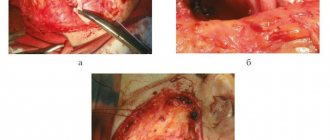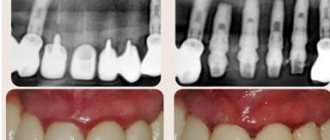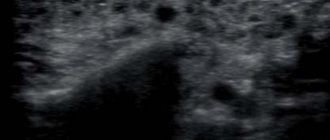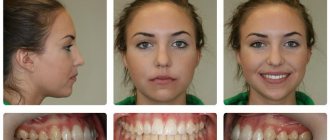AUTHORS: Daniel London, Oded Nahlieli
Keywords:
sonography (ultrasound), salivary glands, parotid gland, submandibular gland, sublingual gland, stones, tumor, inflammation
Key points
- The salivary glands are superficial and can therefore be examined in detail using ultrasonography.
- It is important to scan each gland sequentially according to the protocol.
- The salivary glands can be affected by inflammatory, benign and malignant pathology, which can be detected sonographically.
- The salivary glands may have congenital anatomical abnormalities and may contain calculi, which are also detected sonographically.
- The purpose of the article is to gain in-depth knowledge about the structure of healthy glands, available sonography techniques, pathological changes and differential diagnosis of diseases.
Physical basis and equipment
Ultrasound is a high-frequency acoustic wave that uses a frequency outside the normal hearing range (20 Hz-20 kHz). Most head and neck and maxillofacial equipment are tuned to 8 MHz (8 million cycles per second) or higher. This is in contrast to ultrasound diagnostic devices used in general surgery or obstetrics, which typically operate at a frequency of 5-6 MHz, which provides greater tissue penetration but reduces image resolution. Sensors generating frequencies up to 20 MHz and, in the case of ultrasound biometry, up to 50 MHz, are now also used for imaging the salivary glands. This allows very small structures to be distinguished.
The three major salivary glands (parotid gland, submandibular gland and sublingual gland) are paired and are easily accessible due to their superficial location for sonographic diagnosis using high-frequency linear transducers (8-18 MHz).
Nowadays, the use of high-performance ultrasound devices generates a sonographic image like an anatomy book, even using smartphone ultrasound. The resolution and penetration depth of ultrasound depend on the specified frequency. The higher the frequency, the better the resolution, but the penetration is worse. For visualization of the salivary glands, linear probes with a frequency of 7.5 MHz (5.0-13.5 MHz) are most effective. Box 1 shows the scanning sequence.
| Box 1 Scan sequence
|
Under normal conditions, the three major salivary glands have a similar homogeneous intermediate echogenicity with sharp boundaries. Small salivary glands become accessible for sonographic diagnosis only in the presence of pathological changes (for example, enlargement due to a tumor or neoplastic process). Indications for sonographic examination include swelling or increased volume in the area of the salivary glands and pain. Ultrasound examination (Box 2) allows the doctor to clarify the localization, namely: whether the formation is located in the gland, or is simply adjacent to the contour of the salivary gland. This differential diagnosis often cannot be made solely on the basis of clinical examination.
| Box 2 Ultrasound Components
|
Signs and symptoms of salivary gland cancer
Symptoms of the disease are often caused by damage to important nerves and other structures that pass through or near the salivary glands. Possible signs of cancer include:
- Bumps, lumps, or lumps in the mouth, cheek, jaw, or neck.
- Numbness of part of the face.
- Persistent pain in the mouth, cheek, jaw, ear, or neck.
- Weakness of the muscles on one side of the face.
- Non-healing mouth ulcers.
- Pain when trying to open your mouth wide.
- Outflow of fluid from the ear.
- Changing the size or shape of the left or right sides of the face and neck.
- In the later stages of the disease, problems with swallowing often appear.
Many of the above symptoms may be caused by benign tumors—those that are not life-threatening and do not spread throughout the body—or other conditions. However, if any of them appear, it is necessary to consult a doctor as soon as possible, who will determine the cause of this condition and prescribe treatment.
HOW TO SCAN (PROTOCOLS)
Parotid gland
The parotid gland can be easily examined with the patient's head turned to the side and in a hyperextension position. A summary of the scanning procedure is provided in Box 3.
| Box 3 Parotid gland scanning procedure
|
First, the gland is scanned in cross section, starting from the angle of the jaw to a point slightly above the tragus. Then the longitudinal projection is scanned. The ultrasound probe must be adequately applied to the surface of the skin, using a sufficient amount of gel, especially in the area of the angle of the jaw.
Submandibular gland
If the patient's head is moderately extended, the submandibular gland can be examined ultrasonographically without any problems. First of all, along the midline of the neck, the ultrasound sensor moves in the transverse direction from the hyoid bone to the horizontal branch of the mandible. Sometimes both submandibular glands may be visible at the same time. Then, by moving the transducer sideways, parallel to the horizontal ramus of the mandible, a clear image of the corresponding submandibular gland can be obtained. Here it is necessary to ensure good contact of the gel with the sensor on the skin.
Sublingual gland
The sublingual gland examination does not have significant differences in procedure compared to the submandibular gland examination. The transducer is placed on the skin in a transverse plane in the midline just below the mandible, allowing visualization of both sublingual glands. It is important to note that all averaged structures must be within 0.2 mm of each other, and any outliers are carefully assessed and discarded and, if necessary, reanalyzed.
ANATOMY
Update your anatomy knowledge
The parotid glands consist of a prismatic body and two elongated parts: the anterior part is located on the deep part of the masseter muscle, and the deeper elongated parts, which reach the lateral wall of the pharynx, pass between the prestyloid muscles and the stylomandibular ligament.
The submandibular glands are located in the submandibular space under the floor of the mouth and have a mesial extension called the “hook.” The excretory Wharton's duct arises from this expansion, which is located at the base of the frenulum of the tongue and opens into the sublingual papilla.
The sublingual glands are a group of glands located in the sublingual space, which are limited by the recess of the tongue, the floor of the mouth and the geniohyoid muscle.
NORMAL ULTRASONIC ANATOMY
Parotid glands
The parotid glands, which are the largest of the salivary glands, are enclosed in a separate fascia, which penetrates the glands, forming various lobules. In cross-section, the parotid gland is a sharply defined, homogeneous organ with intermediate echogenicity (Fig. 1).
Rice. 1. Normal parotid gland.
The gland can be clearly distinguished from subcutaneous adipose tissue. The anterior part of the gland sits on the masticatory muscle and can be differentiated from the buccal adipose tissue, which has lower echogenicity, by contraction and relaxation of the masticatory muscles. The posterior part of the gland is located in the retromandibular fossa and is clearly delimited anteriorly by the ascending ramus of the mandible, and posteriorly by the sternocleidomastoid muscle and the mastoid process. Mediocaudal to the inferior pole of the parotid gland, the posterior belly of the digastric muscle and the internal carotid artery can be distinguished. It is important to remember that a small portion of the parotid gland may be hidden by the acoustic shadow of the mandible.
In and around the gland, the internal jugular vein and the retromandibular vein can be found, which are located in the glandular parenchyma and can be visualized, especially in the longitudinal projection. In transverse views, distal to the retromandibular vein, the styloid process is projected onto the glandular parenchyma, which should not be confused with sialolithiasis. The facial nerve is usually not visible. However, with the use of modern high-resolution transducers, it is sometimes possible to obtain a sonographic image of the main outflow canal.
Submandibular gland
The submandibular gland extends cranial to the mandible and the geniohyoid muscle and has a close connection with the anterior belly of the digastric muscle. The submandibular gland forms an arch around the posterior border of the geniohyoid muscle and often reaches ventromedial to the submandibular gland. Echogenic structures with an element of acoustic shadowing are often projected in the area of the gate of the submandibular gland. In this area, it is necessary to carry out differential diagnosis between the elements of the hyoid bone and the sialoliths of the submandibular gland, which may have comparable characteristics on imaging [2,7]. Sonographic imaging characteristics of the submandibular gland include an intermediate echogenic structure with a regular echo pattern corresponding to the echo pattern of the parotid gland parenchyma (Fig. 2).
Rice. 2. Normal submandibular gland.
In and around the gland, the facial artery and facial vein, which pass through the gland, are easily distinguished sonographically. The path of the efferent duct can sometimes be visualized using high-resolution ultrasound probes, even in the absence of duct obstruction. If we are talking about differentiation of the elements of the hyoid bone, then during swallowing movements its displacements are observed.
Sublingual gland
Visualization of the sublingual gland can sometimes be problematic. The sublingual gland is located under the mucous membrane in the oral cavity, lower in the projection of the tip of the tongue, next to the frenulum of the tongue. The dorsal part of the glands often touches the surface of the submandibular gland.
The gland is bounded ventrally and medially by the geniohyoid and genioglossus muscles, and caudally by the mandible. Short excretory ducts usually cannot be visualized. Accumulation of saliva may be found in and around the sublingual gland, which forms the ranula (Figure 3).
Rice. 3. Sublingual ranula.
How does salivary gland cancer develop?
Oncology begins with the appearance in the body of just one altered cell, different from healthy ones. It becomes like this due to various diseases and exposure to certain chemicals, multiplies, creates many copies of itself and creates a tumor. Most of these cells detect and destroy the immune system, but some manage to evade or resist our natural defenses. In addition, they have special properties - they are able to move throughout the body using the circulatory and lymphatic systems. The lymphatic system complements the cardiovascular system. The lymph circulating in it - the intercellular fluid - washes all the cells of the body and delivers the necessary substances to them, taking away waste. In the lymph nodes, which act as “filters,” dangerous substances are neutralized and removed from the body. systems Blood and lymph transport them to other organs, where they take hold and create metastases - additional foci of the disease. Such neoplasms gradually increase in size, destroy all tissues located next to them and disrupt their functioning.
What are salivary glands and how do they get affected by cancer?
These important organs produce saliva - a liquid that not only moisturizes our mucous membranes, but also contains enzymes - proteins that start the process of digesting food. In addition, they contain special substances that help prevent the development of infections in the mouth and throat. There are 3 sets of large glands on each side of our face:
- The largest: parotid
- located in front of the ears. Up to 7 out of 10 tumors develop in them, most of which are benign, that is, not cancerous - they do not grow into nearby tissues and do not create metastases - additional foci of the disease in other tissues. - Submandibular
- located under the lower jaw. They secrete saliva under the tongue. Approximately 1-2 out of 10 neoplasms arise in them, about half of which are malignant. Malignant tumors are called tumors whose cells multiply uncontrollably, destroy surrounding tissues and create metastases - additional neoplasms in other organs located far from the main focus of the disease. - The smallest: sublingual
- located under the oral cavity on both sides of the tongue. In them, oncology begins quite rarely. - In addition to the above, there are several hundred small salivary glands, which can only be seen under a microscope. They are located under the mucous membrane of the lips and tongue, in the palate, inside the cheeks, nose and larynx. Tumors in them are not common, but the vast majority of them are cancerous.
PATHOLOGICAL RESULTS
Box 4 contains a short list of variants of salivary gland pathology.
| Box 4 Variants of pathology of the salivary glands
|
Acute sialadenitis
Since we have to deal with paired organs, it is important to compare both glands in one picture. Characteristic findings are explained by inflammatory edema and an increase in fluid content in the parenchyma, which is transformed during inflammation. Typically we see the following:
- Diffuse expansion of the entire affected gland.
- The organ can be clearly demarcated from adjacent structures.
- The structure of the parenchyma appears loose, heterogeneous, coarsely textured and more hypoechoic.
- Limited hypoechoic formations can be detected as a concomitant inflammatory reaction of the intraglandular lymph nodes.
- Zones of liquefaction (as signs of abscess formation) are visualized as hypoechoic with a hyperechoic surrounding wall and pronounced distal signal enhancement.
- Coarsely structured hyperechoic echoes at the center of such liquefaction lesions may correspond to areas of necrotic tissue.
Chronic sialadenitis
Sonographic imaging is highly dependent on the duration and degree of inflammation of the glandular parenchyma. As in the case of acute sialadenitis, a conclusive differential diagnosis between the various pathogenic forms of chronic sialadenitis cannot be made using sonography alone. Typically we see the following:
- A clear increase in the unevenness of the echo texture.
- The internal structure has a heterogeneous pattern, most likely due to fibrotic changes in the parenchyma.
- Small cystic echo lesions are formed, which correspond to limited ductal ectasia (Fig. 4).
- Sometimes stones within the gland are identified as echogenic structures with a distal acoustic shadow.
Rice. 4. (A) Chronic sialadenitis of the parotid gland. (B) Sialocele of the parotid gland. (C) Dilatation of Stenson's duct (arrows).
Differential diagnosis is important in the following situations:
- Patients suffering from Gougerot-Sjögren syndrome have sonographic signs of enlarged, heterogeneously structured, hypoechoic salivary glands. Numerous limited hypoechoic formations are found inside the parenchyma, which may be associated with cystic dilatation of the ducts, on the one hand, or with enlargement of intraglandular lymph nodes, on the other hand. Sonographically, the structure of the salivary glands looks like a “cloud”.
- Sialadenitis of epithelioid cells (Heerford syndrome) is sonographically characterized by a rich echo pattern interrupted by numerous enlarged lymph nodes that appear as hypoechoic masses.
- Kütner's tumor of the submandibular gland is visualized as a formation with an indistinct echo signal in a certain part of the submandibular gland, which is easily mistaken for an adenoma.
- Ultrasound helps detect changes after radiation therapy. The echohomogeneous pattern disappears after irradiation, with a more hypoechoic and sometimes irregular pattern being a sign of loss of function.
- Other secondary pathological changes (edema, infections and soft tissue tumors) around the salivary glands are easily distinguished from primary salivary gland pathology.
Parotid abscess
The evolution of the inflammatory process is characterized by a hypo-, anechoic lesion with irregular edges. Typically we see the following:
- Hypo-, anechoic lesion with irregular edges.
- Peripheral hypervascularization, which is determined by color Doppler scanning.
- In the case of partial necrotic changes, lymph nodes with anechoic areas of necrosis are identified.
- In the case of fistula formation, a fistula is defined that reaches the skin surrounded by edematous tissue.
An important initial sign of an abscess is the appearance of vessels with a linear and fairly regular direction, which subsequently changes to a more irregular one, and is characterized by numerous anastomoses, which can be determined by an increase in the intensity of the color Doppler signal. In abscesses, the color Doppler signal has a peripheral structure because in this case the vessels are intertwined along the periphery of the abscess.
Enlarged lymph nodes
Lymph nodes may be found inside the parotid gland. However, only around the submandibular gland, due to the characteristics of embryological development. In the parotid gland, a group of small lymph nodes (3-5 mm) is located along the retromandibular vein. These lymph nodes carry out lymph drainage from the Eustachian tube, external auditory canal and deep areas of the face. Intraglandular and extraglandular lymph nodes normally do not exceed 9 mm in diameter.
Ultrasound imaging of otherwise unremarkable glandular parenchyma may reveal predominantly multiple hypoechoic lesions that often lack any distal signal enhancement. Sonographically, as a rule, it is impossible to obtain reliable signs that would allow a definitive differential diagnosis between benign and malignant enlarged lymph nodes.
Reliable differential diagnosis between reactive lymphadenitis (Fig. 5), non-Hodgkin's lymphoma (Fig. 6), MALT lymphoma, or intraglandular metastatic spread is not possible on the basis of sonographic findings alone.
Rice. 5. Pathological lymph node.
Rice. 6. Primary lymphoma of the parotid gland.
Clinical signs, number, location, and sometimes texture of nodes can lead to diagnosis, but do not replace histological analysis. As with enlarged lymph nodes of the neck, some authors mention the so-called “hilus” (gate) as a sign of reactive lymphadenitis.
Cystic tumors
Congenital or acquired salivary gland cysts are usually filled with clear fluid. We usually see an echo-negative tumor with clear borders and distal signal enhancement (Fig. 7).
Rice. 7. Salivary gland cyst (arrows indicate parotid gland, arrowheads indicate cyst).
It is important to note that if cystic tumors are detected sonographically in both parotid glands, and if there is a relevant medical history, then lymphoepithelial cysts caused by HIV infection should be suspected.
Sialolithiasis
Although the sign of a distal acoustic shadow is usually detected, the signal reflection can sometimes be unclear or insufficient. This phenomenon is the result of a reflected ultrasonic component that does not reach the transducer but is scattered out of the image plane. Typically, we see an echo-opaque object with a clear sign of a distal acoustic shadow (Fig. 8) and dilatation of the excretory ducts.
Fig.8. Intraglandular sialolithiasis of the submandibular gland.
Parotid duct stones contain organic components and are visualized with great effort. Sometimes only a distinct echo-opaque object without a distal acoustic shadow may be detected. However, in many of these cases, dilatation of the efferent ducts of the salivary glands can be considered as another indirect sign of the development of sialolithiasis, if the stone cannot be clearly identified. However, dilation of the duct can also be caused by scar changes in the connective tissue (for example, the situation after an inadequately performed incision of the duct or after acute inflammation). Stones with a diameter of 1.5 to 2 mm or more, located in the area of the large salivary glands, can be reliably detected during sonography.
It is important to note that the precise determination of the position of sialoliths (intraglandular, extraglandular and intraductal) is of great importance. Differential diagnosis is important both in the presence of air inside the ducts and in the case of pneumoparotitis, foreign bodies, angiolithiasis and calcified lymph nodes or arteriovenous malformations (Fig. 9).
Rice. 9. Arteriovenous malformation of the salivary glands.
Remember, because of its limited sensitivity and limited negative predictive value, sonography does not reliably exclude small salivary gland calculi. Further diagnostic studies are needed to identify stones in patients with normal sonographic findings and suspected lithiasis.
Sialadenosis (sialosis)
All large salivary glands can be simultaneously affected by sialoadenosis. Sialadenosis is a non-inflammatory condition characterized by bilateral enlargement of the salivary glands, most commonly the parotid glands. Usually we see that the glands look indistinctly enlarged, are difficult to differentiate from surrounding structures, their echo structure looks homogeneously hyperechoic, and with sialoadenosis tumor-like lesions are not detected. In some cases, the parotid gland is so enlarged that ultrasound requires a low-frequency transducer to evaluate the deep part.
Benign epithelial tumors of the salivary glands
A well-defined boundary between the surrounding salivary gland tissue and the tumor itself is a characteristic feature of a benign salivary gland tumor. Because ultrasound is unable to visualize nerves, the relationship of parotid tumors to the facial nerve cannot be reliably determined.
Pleomorphic adenomas have a homogeneous/hypoechoic texture. However, sometimes heterogeneous structures with hard and cystic inclusions may be noticeable. In these cases, a characteristic feature is distal signal enhancement (Fig. 10).
Rice. 10. Pleomorphic adenoma of the parotid gland.
Monomorphic adenomas (adenolymphomas) may also appear sonographically homogeneous and hypoechoic, as is the case with pleomorphic adenomas. If the proportion of cystic structures is high, adenolymphoma may also present completely without echo with extensive distal enhancement. Occasionally, septae may be identified within the tumor.
The remaining less common types of benign salivary gland tumors (eg, basal cell adenomas, oncocytomas, lymphoepithelial lesions) also have similar nonspecific sonomorphological features.
Definitive sonographic identification and differential diagnosis between different types of benign salivary gland tumors is currently impossible, although significant cystic portions in the mass tend to indicate adenolymphoma, and the absence of cystic areas indicates pleomorphic adenoma. To a certain extent, parotid tumors can be classified as either the "superficial" or "deep" part of the gland.
Benign nonepithelial tumors of the salivary glands
Lymphangiomas and hemangiomas (Fig. 11 and 12) have similar sonomorphological characteristics, which makes differential diagnosis between them impossible.
Rice. 11. Intraglandular lymphangioma.
Rice. 12. Submandibular hemangioma.
During the study, loosely connected alveolar structural components, consisting partly of hypoechoic and hypergeogenic areas, can be detected. Sonographic examination allows us to assess the depth of penetration and spread of this tumor into the corresponding salivary gland and into the area of surrounding soft tissue.
Intraglandular and extraglandular lipomas (Fig. 13) appear as sharply demarcated, ovoid formations, with a hypoechoic and homogeneous signal reflection pattern.
Rice. 13. Well-defined lipoma.
Lipoma has a more characteristic hypoechoic reflection pattern than the rest of the salivary gland parenchyma, but its echo texture is more hyperechoic than other types of intraglandular tumors, and it also has a linear hyperechoic feathery texture.
Malignant tumors of the salivary glands
We typically see a fuzzy edge and a patchy echo texture. It is possible to describe the relationship between invasive tumor growth and surrounding tissue. It is impossible to detect involvement of the facial nerve in the malignant process. The most common malignant tumors of the salivary glands are mucoepidermoid carcinoma, adenoid cystic carcinoma, carcinoma arising in pleomorphic adenoma, and distant metastases (Fig. 14).
Rice. 14. Metastatic melanoma in the parotid gland (arrows indicate parotid glands, arrowheads indicate metastases).
Indications for sonographic examination are sometimes absent, since at the preoperative stage it is impossible to identify with complete certainty the benign or malignant nature of tumor development. If a malignant process is suspected, ultrasound-guided fine-needle aspiration biopsy can be a useful tool to more accurately classify the tumor at a preoperative stage.
It is important to note that if tumor margins cannot be accurately imaged by sonographic examination, especially when the tumor extends to osseous or deep structures, the patient's diagnostic imaging should be extended in any case to computed tomography and/or magnetic resonance imaging.
Gougerot-Sjögren syndrome
Gougerot-Sjögren syndrome occurs when lymphocytes invade and destroy the exocrine gland. It is the second most common autoimmune syndrome after rheumatoid arthritis, affecting the salivary glands in 40-80% of cases. This results in a higher incidence of parotid lymphomas and salivary stone disease. Typically we see the following:
- At an early stage, sonography is normal.
- Later, the glands become enlarged and large-scale structural damage occurs.
- The gland is heterogeneous.
- At a later stage, sonographic examination reveals sialoectasia and marked hypervascularization on color Doppler ultrasonography of the salivary glands.
The intraoperative role of sonography has become important since the introduction of minimally invasive surgical techniques in salivary gland surgery. During surgery, if endoscopic observation of the surgical field is not possible, sonographic guidance can be used to:
|
Rice. 15. Minimally invasive procedures under ultrasound guidance.
Rice. 16. Therapeutic intraglandular injection of Botox.
Color Doppler ultrasonography of the salivary glands
The standard B-scan is a well-established tool for diagnosing salivary gland diseases. For tumors located in the salivary glands, there is increasing interest in non-invasive collection of clinical information such as growth and invasiveness, as well as making an accurate diagnosis before surgery. Before the benefits of sophisticated ultrasonography became available, standard testing was performed by correlating simple sonomorphological criteria, such as anechoic areas, with specific histological features. This can be easily achieved even if you buy a portable ultrasound machine .
Over the past few years, color Doppler sonography has become well established as an integral part of head and neck, ENT and maxillofacial surgery, especially as part of the preoperative evaluation of tumors and cervical lymph nodes.
Color duplex sonography
Color duplex sonography (Box 5) is a combination of B-mode sonography, pulsed Doppler sonography, and color coding of perfusion areas. The basic principle of color duplex sonography is the frequency shift of the transmitted signal, which is caused by reflection from moving red blood cells. The speed and direction in which red blood cells approach and move away from the transducer provide the information needed to perform duplex sonography.
| Box 5 Color duplex sonography
|
The ability to use Doppler signal amplifiers to achieve improved visualization of tumor vascularization has provided new opportunities for tumor characterization. Analysis of microvascularization and time-dependent changes after Doppler amplifier insertion, as well as elastography, are promising new tools for identifying features that help determine whether specific changes are typical for certain types of salivary gland tumors (Fig. 17).
Rice. 17. Study of the salivary glands using power Dopplerography.
The diagnostician should know the following:
|
Glands of external, internal and mixed secretion
The normal functioning of the human body depends on regulatory systems. These include human glandular systems.
The glands make all organs and tissues work with the help of enzymes and hormones. Thus the organism exists as a single whole.
Gland
- This is an organ that produces any substance necessary for the body.
These substances can be released as secretions onto the surface of the body or into the body cavity. And also as a hormone directly into the blood.
· Exocrine glands are called exogenous.
· Endocrine glands are endogenous.
The prefix exo- from the Greek word (exo) means “outside, outside”;
Prefix endo - (endon) - inside.
Exocrine glands
– exogenous. They produce substances (“secret”) and release them into the external environment of the body or into its cavity.
Sweat glands
.
These are skin glands that secrete secretions in the form of sweat onto the surface of the body.
Sweat
is an aqueous solution of salts and organic substances.
As a result of profuse sweating in the hot season, the body cools down.
As well as the removal of metabolic products harmful to it, toxic substances that could enter the body along with food or medicine.
Sweat glands are distributed over almost the entire surface of the body. A large number of them are located on the palms, soles, and also on the forehead.
Mammary gland
- These are modified sweat glands. Both women and men have them. They are similar in structure, but differ only in the degree of development.
The glands consist of separate lobes. They form branching tubes called milk ducts. At the end they have extensions in the form of lobules.
Each lobule contains mammary glands. They form a secret
- milk.
The lobes are separated by layers of loose connective and adipose tissue.
The peculiarity of the mammary gland is that it functions only during the period of feeding the baby.
Sebaceous glands.
They are located in human skin and consist of branched terminal sections in the form of a sac and an excretory duct.
The pouch itself is filled with secretory cells with fat vacuoles.
During secretion, these cells are completely destroyed and all their contents turn into secretion, that is, sebum.
The sebaceous glands have excretory ducts that empty into the hair canal.
They are found in almost all parts of the body. Absent on the palms and soles.
The next exocrine glands
are the lacrimal glands.
They consist of several groups of small alveolar-tubular glands, which are located in the frontal bone. Glands have excretory ducts
which open into
the lacrimal sac
. Clear tear fluid is released from it.
Ninety-eight percent of tears consist of water, and the remaining two percent are protein, urea, mineral salts, and the enzyme lysozyme.
.
Functions of the lacrimal gland secretion
, that is, tears.
They clean the surface of the eye from dust, lint and other contaminants.
Tears regularly wash the eyes. At the same time, they protect it from drying out.
Tears are involved in the nutrition of the cornea. They also protect against harmful microorganisms;
The salivary glands are also classified as exocrine glands.
which are located in the oral cavity. Their excretory ducts exit into the body cavity.
In humans, in addition to the small salivary glands, which are located in the mucous membrane of the tongue, palate, cheeks and lips, there are three more pairs of large salivary glands: the parotid, submandibular and sublingual.
The glands secrete a secretion called saliva
.
It is a colorless liquid that mainly consists of water and inorganic substances.
Saliva also contains the protein mucin, which gives saliva mucous properties. It is necessary for the formation of a food bolus, which is then easily swallowed.
Saliva contains the enzyme lysozyme, which kills bacteria.
A person produces approximately 1.5 liters of saliva per day.
Stomach glands
also classified as exocrine glands.
As you know, the gastric mucosa has folds, due to which the digestible surface area increases.
The epithelium of the stomach contains gastric pits, which are represented by the glands of the stomach.
They secrete gastric juice, which contains hydrochloric acid and digestive enzymes.
Intestinal glands.
The mucous membrane of the small intestine secretes juice. It contains enzymes, amino acids, urea, white blood cells and mucus.
Enzymes are necessary to break down incoming particles into food molecules. Mucus is necessary to protect the mucous membrane and also for the attachment of enzymes.
Endocrine glands.
Pituitary
─ brain appendage in the form of a round formation, which is located on the lower surface of the brain.
Pituitary
- This is the main endocrine gland. The activity of other glands depends on its work.
It consists of 2 parts of glands, which are combined in one organ.
The first gland, the anterior lobe, produces hormones that regulate the functioning of other glands.
The second gland - the posterior lobe of the pituitary gland and the intermediate part consists of nerve cells. Hypothalamic hormones accumulate here.
We will look at hormones and their effects on the human body in more detail in the next lesson.
.
Another endocrine gland is the pineal gland
─ The pineal gland is grayish-red in color, which is located in the center of the brain. Its shape resembles a pine cone, which is why it is called that.
The secretory function of this gland depends on illumination.
The pineal gland regulates the biological rhythms of the body (diurnal, seasonal and others).
It also inhibits the functioning of the pituitary gland. Regulates body growth and sexual development.
gland also belongs to the endocrine glands .
It is located in the neck and consists of two lobes.
Thyroid hormones are involved in:
· In the regulation of metabolism,
· In the growth of individual cells,
· In the maturation of tissues and organs.
· In the metabolism of proteins, fats and carbohydrates.
Thyroid hormones contain iodine. Therefore, the thyroid gland accumulates it. This element is necessary for her health and well-being.
The body requires only 0.3 mg of iodine per day. Pay attention to foods that contain iodine.
In the area of the thyroid gland there are four more small parathyroid glands.
Their number can vary among different people from two to eight. The typical number is 4 glands.
They produce a hormone that controls calcium levels in the body.
Adrenal glands
, also classified as endocrine glands.
They are located above the right and left kidneys. The adrenal glands are composed of two structures—the cortex and the medulla.
The right adrenal gland is triangular in shape, and the left is crescent-shaped.
The adrenal glands produce large amounts of hormones. They regulate the body’s metabolism and also adapt it to unfavorable conditions.
One of the hormones that you all know is adrenaline. Its production increases sharply during stressful conditions, a sense of danger, anxiety, fear, and shock.
Exocrine glands
secrete secretions onto the surface of the body or into the body cavity.
The endocrine glands
secrete the hormone directly into the blood.
Also intermediate glands
mixed secretion. They simultaneously release hormones and substances such as enzymes and digestive juices into both the blood and the body cavity.
These include the gonads, the testes
in men
, and
the ovaries in women
.
These glands secrete germ cells, sperm in men and eggs in women. Due to this, external secretion occurs.
They also release sex hormones into the blood. This is how internal secretion occurs. In men, the predominant hormones are androgens, and in women, estrogens, which determine gender, puberty and behavior.
Another gland of mixed secretion is the liver
.
It is the largest gland in humans. It is located on the right side of the abdominal cavity under the diaphragm.
The liver consists of lobes
,
right and
left . Each of which consists of a thousand prismatic slices.
The liver produces bile. Which enters the gallbladder. Its ducts open into the duodenum.
The liver is the most important blood depot. A quarter of the body’s total blood is retained in it.
It controls the constancy of the internal environment of the body - homeostasis. Vitamin A is formed and accumulated in it.
The liver removes toxins from the body, such as alcohol. Maintains constant body temperature.
In addition, the liver is capable of regeneration, that is, the restoration of lost parts.
Another gland of mixed secretion is the pancreas.
It is the second largest after the liver.
It is represented by a lobular formation, which is located in the abdominal cavity behind the stomach. It is closely adjacent to the duodenum.
The pancreas has an exocrine
and
endocrine parts
.
The first opens its ducts into the duodenum and secretes pancreatic juice, which contains enzymes necessary for digestion. This is how external secretion occurs.
The endocrine second part of the pancreas consists of Langerhans cells. They carry out internal secretion, that is, they release the hormone insulin into the blood, which is involved in carbohydrate metabolism.
Thymus gland (thymus).
The thymus gland got its name due to its characteristic shape, reminiscent of a trident fork or even the staff of Poseidon. The thymus gland has another name - thymus, which translated from Greek means “life force”.
The thymus is located in the upper part of the chest. A gland consisting of two lobes, the lower parts of which are wide and the upper parts are narrow.
Cells
called lymphocytes in the thymus , which recognize and destroy harmful substances to the body. Thus, they are responsible for the immune function of the body.
Exocrine glands:
Endocrine glands:
Mixed secretion glands:
Summary
Ultrasonography has established itself as the primary imaging technique in the diagnosis of salivary gland diseases. Sonographic examination is usually sufficient to diagnose sialolithiasis. If chronic sialoadenitis or sialoadenosis is suspected, and sonographic data are insufficient, standard sialography may be required in some cases. A histological examination is necessary as soon as the diagnosis of a neoplasm is established. If the tumor's enlargement and connection with surrounding tissues cannot be determined sonographically, subsequent computed tomography or magnetic resonance imaging should be performed. To conduct research, we recommend using a device from GE Voluson E8 .










